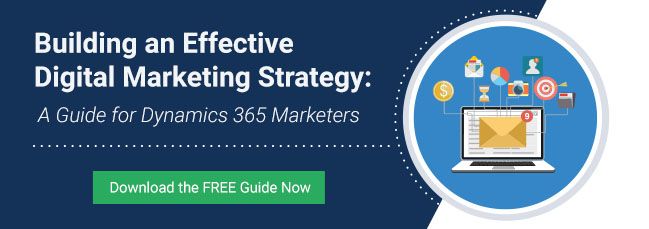Do you remember your first digital marketing love? In the early days of digital marketing, for most marketers, it was their website – full of new and exciting ways to connect with and inform audiences. But over time, as new marketing technologies and tactics emerged, websites were no longer the shiny new kid on the block. Yet despite all that digital marketing has to offer today, websites still deserve to feel the love from marketers. That’s because – from email marketing to social media to SMS and more – your website is at the heart of it all. After all, that’s where the magic of conversions happens. So, how do you ensure that your audiences fall in love with your website too? Here are seven tips:
1. Keep it simple. Clutter is the enemy of your website’s success. From the design to the content to the navigation, everything about your website should be simple. While it may be tempting to provide every single detail and image related to your company or to try something unique and clever with your navigation, be sure to balance those concepts with a stress-free user experience. If a website feels cluttered and overwhelming or confusing to navigate, people will often leave – sometimes never to return. Remember that white space, straightforward and jargon-free text, clear and crisp images, and intuitive navigation are all your friends.
2. Make CTAs easy to find. Make sure that it’s easy for your website visitors to complete the actions you want them to take. For example, one of our main calls to action (CTA) on the ClickDimensions website is for people to request a demo of our marketing automation solution. So, at the top of every page, you will find a large Request a Demo button. The button is also accompanied by our phone number and email address, in case a visitor would prefer these communication methods to filling out a form. Decide what the big actions are that you want your visitors to take – and that they want to take too – and make the CTAs for those actions easy to find.
3. Offer engaging content. Engaging content is an essential part of making your audiences fall in love with your website. Anticipate the questions your visitors will have when visiting your site and ensure that your content answers those questions. To keep your website engaging and exciting, provide a variety of content that can appeal to a range of visitors. On-page text, images, videos and downloadable content are all elements to include.
4. Keep it fresh. If someone visits your website multiple times and they find the same content each time, they aren’t likely to be anxious to return. Give them a reason to keep coming back. If your audiences know that there’s always something new for them on your site, they will be more apt to return regularly. New videos, downloadable content, blog posts, webinars to register for, products and product info, and images can all encourage repeat visitors.
5. Allow for easy communication. Sometimes people can’t find the specific info they’re looking for on your website or they just want to speak to someone directly. Make it easy for them to do so. Don’t bury contact information. Have an easy-to-access Contact Us page that provides all the details someone might be searching for – addresses, phone numbers and email addresses. Also, consider adding a live chat option to your site. This provides visitors with quick access to your company’s representatives and can help you rapidly address a wide range of questions and inquiries. Live chat can also help increase conversions and customer satisfaction.
6. Provide easy access to important info. What are the most important pieces of information on your website? What are the most visited pages? Use the answers to these questions to create an internal linking structure within your website that provides multiple avenues of access to this information. For example, if your Product Features page is among the most visited, don’t limit access to the page to your main site navigation. Look for other opportunities to incorporate links to that page – perhaps from a Pricing or About Us page. This helps ensure that no one is searching too long for important and popular information.
7. Continue improving. Just like you need to continually add fresh content, you should also regularly look at how you can improve your site overall. Utilize analytics to identify trouble spots, like pages that have a high bounce rate. Examine those pages and look for ways to improve. Perhaps shorter text could keep people engaged or more dynamic images or a slightly different page layout. These small tweaks can make a big difference in your website performance.
Happy Marketing!










Leave A Comment